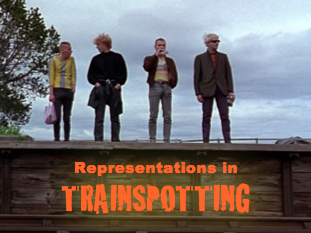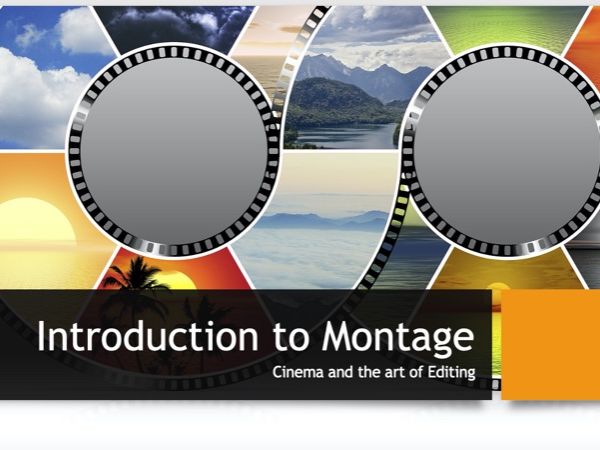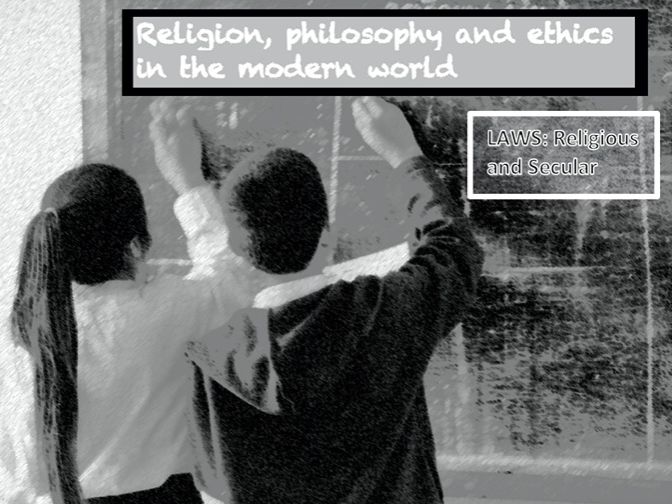49Uploads
8k+Views
2k+Downloads
All resources

REPRESENTATIONS IN *TRAINSPOTTING*
This is a set of notes to help for revision of TRAINSPOTTING for film studies A-Level candidates.
Representations analyzed include:
Nationality
Class
Gender
Age

EDUQAS FILM STUDIES A-Level - Silent Cinema Sunrise (F.W. Murnau)
This 39-slide fully interactive presentation ends with exam questions and guidance from the EDUQAS boards, as well as offering historical context and aesthetic characteristics of German Expressionist cinema, with special focus on SUNRISE (FW Murnau).
This presentation is excellent for exam revision and conveys the key talking points for this section of the **Film Studies **Component 2 paper.

The Cinema of Wong Kar-wei: an introduction
Suitable for teaching the EDUQAS FILM STUDIES A-LEVEL, this resource comprises a 23-slide presentation giving an overview of the distinctive features of Wong Kar-wei’s films. Useful for the EDUQAS A-LEVEL film studies Component 2: Global Filmmaking perspectives, Section D, Modern Experimental Film, this resources is fully animated and contains links to illustrative You Tube videos.
This presentation provides an introduction to the cinema of Won Kar-wei and works well as background / contextualisation of CHUNGKING EXPRESS or FALLEN ANGELS.
time: 1 hour
Bundle

EDUQAS FILM Spectatorship Bundle
This collection of resources provides a range of
classroom ready resrouces to tackle the FIlm Studies A Level Component 1B. - Spectatorship Topic.
The Films referenced and used as examples include No Country for Old Men, Carol and Winter’s Bone. There is also an introductory PowerPoint with an overview of what examiners mean by ‘Spectatorship’ and clear guidance on how to apply it to specific films.
There is a Test included as well.

Do Documentaries Tell Stories? - starter exercise
This is a quick starter worksheet to get students to begin a discussion on the similarities and differences between documentaries and narrative (fiction) films. They may be surprised how many conventions and techniques overlap. This can help to stimulate discussion of what makes a film a documentary, since documentaries can be harder to distinguish from narrative films than one might think.

Movie-Themed Treasure Hunt
This is an activity for team or pairs from Years 11+ and involves an active search for the answers, which are interdependent, so that one answer leads to another as students progress.
The game could be set up as a race to the finish line. Depending upon the research abilities and cinematic specialist knowledge of the team, the game could take anywhere from 15 minutes to 45 minutes to complete.
Included in this resource pack is: a treasure hunt ‘map’, two styles of answer sheets for students/teams, and an answer key for teachers.

What is Tolerance?
This exercise provides interactive discussion prompters and tasks that help students to reflect carefully on what they think tolerance really means. It should form the basis for two 1-hour lessons, for secondary students between ages 14 - 18.
The aim is to foster a critical discussion about tolerant societies, and to help students to reflect upon whether there is a distinction between tolerance and cultural/ moral relativism.
How can tolerance be a principled approach that is fair to both individuals and communities?
Is tolerance fair to **all **citizens?
Does a tolerant state promote genuine** intellectual** diversity?
How can a state promote tolerance without becoming an intolerant state, i.e. without promoting censorship of controversial ideas?

Covid 19, Change and Technology: THE MACHINE STOPS
E.M. Forster’s 1909 short story about a future dystopia provides an excellent stiumlus to explore many issues that impact young peoples’ lives in 2021.
THE MACHINE STOPS (1909) paints a picture that allows us to reflect on a multitude of topical questions:
how far has technology helped us to advance, individually and socially?
how does technology impact our relationships to our bodies and senses?
how does technology affect our relationship with the natural world?
how do metaphor, irony and allegory work to convey social messages?
how does technology impact our ability to gain knowledge of what is true and to separate fact from fiction?
Forster’s prophetic short story was extremely prescient in its vision of a future society in which people would be confined indoors, socially distanced and isolated even from their closest kin, and in which all connection to people and the world is mediated through a “machine”. What happens when Kuno decides he wants to escape the machine and to live by his own wits?

Cinema and the Art of EDITING
For both film and media studies, this 14-slide full colour, interactive PowerPoint presentation provides a brief introduction to the basics of film editing (montage).
The six elements of an edit are introduced, as well as a discussion of pace, style of editing and parallel editing (cross cutting).
Helpful links to YouTube videos provide illustrative examples of the terminology presented.
The Presentation - along with Q&A and examples - should fill a 1 hour lesson.

Understanding Tolerance Presentation
This is a full color 27 slide animated PowerPoint presentation. It forms the basis of an assembly or a full two hour lesson (depending upon time taken for class discussion/debate).
It is a very interactive tool designed to prompt discussion and debate and to get youngsters thinking for themselves and reflecting on the complexities and problems associated with tolerance. It encourages them to actively define tolerance, and to reflect upon their definition, based on careful analysis of real life cases and examples.
This lesson can be used can be used in an American or British context. It would work with a wide variety of age groups and can help in teaching citizenship, PSHE, RS, or British Values.
It could also work well as a starter exercise for the study of Liberalism (politics).

Post-Screening Discussion Questions - Film Studies - Raise the Red Lantern (1991)
**Raise the Red Lantern **(Dir. Zhang Yimou, 1991, China) is an excellent example of a film that deconstructs how
patriarchal power works and in this sense it is a film that is empowering for women, despite being a narrative *about *
disempowered women.
The film has also been discussed as a metaphor for Chinese state power and therefore also functions a a subversive political commentary.
With beautiful cinematography and composition throughout, this film is also a study in cinematic perfection, with mise-en-scene used to great symbolic effect. The film could be studied just as an excellent example of mise-en-scene.

Spectatorship Test
This 10 question test is a great accompaniment to the Specatatorship PowerPoint Presentation Resource for teaching the EDUQAS A-Level Film Studies Component 1, Section B. Contemporary American Film.
Topics covered include: hypodermic needle theory, active versus passive spectatorship, archetypes, intertextuality, viewing contexts, polysemy and oppositional readings of films.
The test is best used for Year 12 or Year 13 film studies but can also be helpful for Media Studies teachers vis-a-vis spectaorship and ideology.

SUNRISE (FW Murnau, 1927) -- Test
Basic Comprehension questions - Test - for SUNRISE, Eduqas A-Level Film Studies.

What is THE BECHDEL TEST?
A brief explanation of the Bechdel Test and what it measures. The test is widely regarded as a measure of female representation in film, and provides a useful ‘rule’ by which representation of women / girls can be measured.

Understanding Religious and Secular Laws
This is a 30 slide colour PowerPoint Presentation, with animated slides and interactive questions. The last several slides are designed for exam preparation for OCR General Certificate of Secondary Education.
It is also useful for discussing broader questions, such as the differences between morality and law, or secularism and theocracy.
Learning Outcomes:
Understand the difference between secular and religious laws.
For United Kingdom GCSE Religious Studies (9–1)
Unit J625/06: Religion, philosophy and ethics in the modern world from a Christian perspective
Unit J625/07: Religion, philosophy and ethics in the modern world from a Muslim perspective

RELIGION, HUMAN RIGHTS & SOCIAL JUSTICE
Ideal for teaching and revising the
AQA Religious Studies A, Component 2 – thematic studies
Theme F: Religion, human rights and social justice (GCSE).
This 56-slide PowerPoint presentation covers the AQA curriculm and textbook’s main definitions and helps
GCSE students prepare a good set of answers for the exams.
It will encourage critical thinking about the examination board’s definitions and assumptions at certain points, but will not prevent students from saying the “right” answers needed to pass the examination.

Fish Tank (Andrea Arnold, UK, 2009) HOMEWORK QUESTIONS
Useful for the EDUQAS Film A-Level.
12 questions covering representations, class, ideology, narrative and ‘the female gaze’.

Director Andrea Arnold - Her Auteur Signature
Studying FISH TANK (UK, 2009) for the Film or Media A-Level?
Or perhaps you are just looking for a film with empowered female leads?
Maybe you want to think about the concept of an ‘auteur’ director?
This resource also gives some tips for studying ideology in films.
Suited to 14+ age groups, this resource can be used for the EDUQAS Film Studies A-Level or AS Level, or just as an introduction to the concept of ‘Auteur’ directors or ideology.
Bundle

Religious Studies Bundle
This bundle contains three colorful, interactive PowerPoint Presentations that can be used for full lessons on religious beliefs about a variety of topics, including: human rights, social justice, law, secularism, crime and punishment.
It references both Christianity and Islam and can be used to broaden discussion to more philosophical questions such as:
What is the relationship bewteen religious concepts of justice and society’s laws?
Which is the best reason / purpose for punishment?
Why do liberals believe that morality is a private matter?

Religious Versus Secular Laws
This 38 full color **interactive **slide presentation can be used to teach many concepts pertaining to religion and society. It explains the relationship between modern states (primarily the United States and Great Britain) and religions (with focus on Christianity & Islam). Concepts such as secularism, liberalism, theocracy and apostasy are included. Religious teachings are used and analysed, so that students are taught to demonstrate knowledge of **religious approaches to law **as well as applications and analysis. Exam practice questions are provided as well as guidance on how to answer them.
This is also useful for citizenship and cultural studies courses.




















